This Quick Question came up last week, and it’s a good one!
According to the model codes, is it acceptable to install hold-open devices on corridor doors in a health care facility?
The model codes address openings called “corridor doors” in health care facilities, which may serve patient rooms, exam rooms, offices, and other types of related spaces. While some rooms that are accessed from a hospital corridor may need to be fire rated due to a hazard (like an electrical room) or vertical exit enclosure, the majority of these doors are not required to be fire door assemblies. However, the model codes do include specific requirements to help ensure that these doors provide a critical layer of protection for patients in health care facilities.
Because the model codes do not require doors serving patient rooms and most other health care corridor doors to meet the requirements of NFPA 80 for fire door assemblies, the doors are not typically required to be self-closing or automatic-closing. Facility staff is expected to close the doors if a fire occurs, or to evacuate patients to another smoke compartment. Positive latching hardware is required (including the inactive leaves on pairs of doors), so that the doors will remain closed and latched during a fire. Roller latches are not allowed by the Centers for Medicare and Medicaid Services (CMS) for health care corridor doors in the U.S.
The IBC does not specifically state whether these doors are permitted to be equipped with hold-open devices, to maintain the door in the open position. However, NFPA 101 – Life Safety Code does include some helpful language in the chapters for both new and existing health care occupancies:
Doors shall not be held open by devices other than those that release when the door is pushed or pulled.
Annex A of the Life Safety Code (both new and existing chapters) states:
Doors should not be blocked open by furniture, door stops, chocks, tie-backs, drop-down or plunger-type devices, or other devices that necessitate manual unlatching or releasing action to close. Examples of hold-open devices that release when the door is pushed or pulled are friction catches or magnetic catches.
This clarifies that non-fire-rated corridor doors are permitted by NFPA 101 to be equipped with hold-open devices, as long as the doors can easily be closed by staff pushing or pulling on the door. For example, a friction holder would be acceptable in my opinion, but a kick-down holder or a hook would not. I would apply this same logic when considering the intent of the I-Codes, since hold-opens are not specifically addressed.
Have you run into this question in the field? WWYD?
You need to login or register to bookmark/favorite this content.


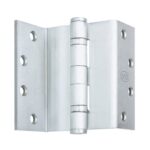
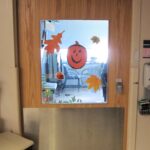

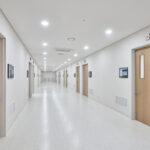
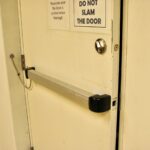
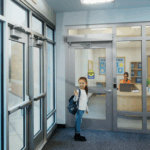
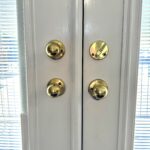
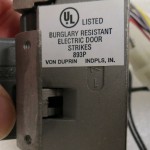
What about emergency departments in which I have seen storefront glass with rolling doors and patients in in the hallways?
2015 IBC section 407.3. Corridor walls shall be constructed as smoke partitions…
407.3.1 Corridor doors, other than those in a wall required to be rated by Section 509.4 or for the enclosure of a vertical opening or an exit, shall not have a required fire protection rating and shall not be required to be equipped with self-closing or automatic-closing devices, but shall provide an effective barrier to limit the transfer of smoke and shall be equipped with positive latching. Roller latches are not permitted. Other doors shall conform to Section 716.5.
Seem to me the requirement for the door should be easily closed and a kick down would be counter to that requirement
Hi Curt –
Could the doors you’re referring to be within a suite? Sometimes the hallways within a suite look like corridors but the requirements for the doors are different.
– Lori